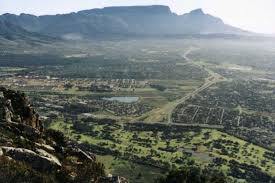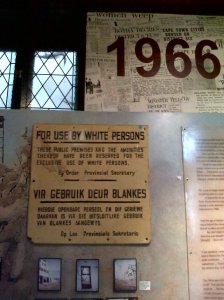One of the things I love about working with people from other parts of the world, is that I get to introduce them to my beautiful city. I love that I can show them aspects of Cape Town they don’t usually get to see and share a perspective they may otherwise miss. So I was thrilled last week when my students wanted to visit the District Six Museum. Armed with my phone camera we set out to explore an interesting bit of Cape Town’s past…

Now you may think that museums are boring but – although only 359 years old – Cape Town is a city with a history that is simultaneously rich, cruel and inspiring. And the District Six Museum captures that. With Table Mountain forming a secure backdrop, the open stage stretches all the way to the Cape Flats where the drama continues today.

The Museum fascinates people who visit it because it tells the story of how a government physically destroyed the homes of thousands of people under a policy of segregation during the Apartheid era. Bulldozers razed hovels, houses, flats, neighbourhoods to the ground. Families were split, communities broken and today the gaping emptiness remains at the foot of the mountain, while the Cape Flats – where those evicted were moved- is a daily scene of lost battles against drugs, alcoholism, unemployment and crime.

Horrible as it sounds, we love these kinds of stories. We want to understand how we came to be as we are, or explain how others made us this way. This museum was built to tell this story. The curator, Noor Ebrahim, regularly retells an account of his racing pigeons who, after months on the Cape Flats still flew ‘home’ to District Six and perched in front of the Moravian Church every time he set them free. For most visitors, whether you read it or hear it, it’s a tear jerker.

But there are some surprising elements of the museum that may be glossed over or even missed. That the museum tells a tragic tale is only one interpretation: There are portrait flags that fly in the museum celebrating its heroes: philanthropist Dr Abdurahman, activist Cissie Gool, poet and writer Richard Rievs, ballet dancer Johaar Mosaval, penny whistler Robert Sithole and so many others. They are not just famous people who once lived in District Six. They are extraordinary in that they did not allow the destruction of their homes to become the destruction of their lives.

They chose to use the experience of eviction and discrimination to forward their own contribution to the world. It is they who make the visit a life lesson. Their lives demand that we examine our own narrative and quit retelling the sad stories that keep us stuck.

Given, a walk down memory lane can bring on a bout of nostalgia, a longing for the good old days when the worst gangsters only had fist fights and children played in the streets with wooden pegs, tin cans and chalked blocks with no fear of being hit by stray bullets. But that only serves to disconnect from right now. On the other hand, remembering can evoke sadness, anger or hatred…that provokes blaming and revives long held grudges. Neither reaction is empowering.
Maybe there is something to consider about memory itself, as Roderick Sauls suggests in his “memory room” exhibit in the museum.

All the objects on display are only vaguely recognisable, as if excavated from limestone when they’ve actually been dredged up from a chalky memory. Some items stick out clearly enough, but others require a fair amount of guess work to determine what they are…the tricks our memory plays as we remember and create what we see in our mind’s blurry eye.

How much of what we remember is what actually happened? And how much of it is simply our own reason for not taking up the challenges life presents and playing fullout to be productive, successful or just plain happy? We don’t have to forget the history, but before we remember, let’s choose whether we are going to tell it as a story that inspires us or one that keeps us stuck.
Filed under: Activism, Mindfulness, Perspective, Relationships | Tagged: Act, Activist, Apartheid, Cape Flats, Cape Town, choice, city, District Six, inspire, Life, Love, Memory, nostalgia, perspective, Poetry, Reality, South Africa, Table Mountain | 3 Comments »










